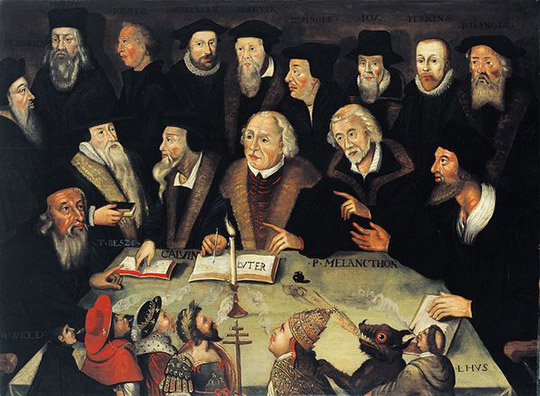 |
|||||||||||||
|
The Reformation Review "The Reformation". "The candle is lighted, we cannot blow it out." Protestant reformers at a table. A cardinal, devil, Pope, and monk are trying to blow out a candle. Martin Luther sits in the center, with Melanchthon and Hus on his right hand, Calvin and Beza on his left.  Martin Luther in the Circle of Reformers, 1625–50 (oil on panel), by an artist of the German School. Image: DHM Berlin/Bridgeman Images The scientific and religious revolutions that began 500 years ago were not causally related, but were both stimulated by printing, argues David Wootton. "What made the scientific revolution possible were three developments. A new confidence in the possibility of discovery was the first: there was no word for discovery in European languages before exploration uncovered the Americas. The printing press was the second. It brought about an information revolution: instead of commenting on a few canonical texts, intellectuals learnt to navigate whole libraries of information. In the process, they invented the modern idea of the fact — reliable information that could be checked and tested. Finally, there was the new claim by mathematicians to be better at understanding the world than philosophers, a claim that was grounded in their development of the experimental method." ~ from History: Science and the Reformation by David Wooton. Nature 550, 454-455 (26 October 2017) Read the entire article... |
| Copyright © Redefining the Sacred. All rights reserved. | |